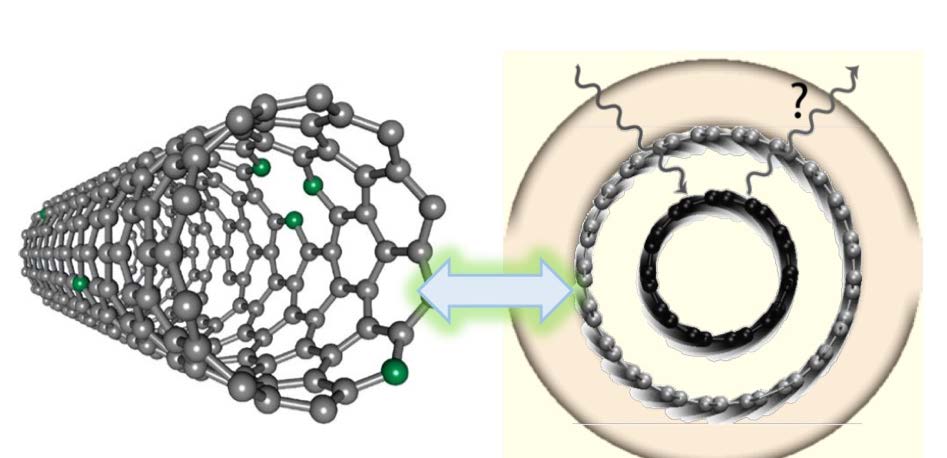Heteronanotubes with tunable functionality
Heteronanotubes with tunable functionality
Research questions:
Heteronanotubes offer a unique platform for tailoring structural electronic and optical properties towards different applications such as biosensing and imaging, new complex nanocomposites [1]. However, the exact control of heteroatoms and their influence on the overall electronic structure and optical properties remains elusive [2,3].

The exact control of foreign atoms is a pathway to control overall electronic structure and optical properties (and spectroscopic response) of heteronanotubes.
Methods:
Using our experience on the structural control during synthesis this project moves towards control on the functionality upon local heteroatom distribution [4] (cooperation JK). Modified electronic and optical properties, and electronic perturbations will be followed via quantification of the optical response and shifts in the excitonic transition energies in presence of specific and selective functional centers. This brings strong synergy with LG, CF, GK on theoretical spectroscopy at different length scales. Altogether, this will enable access in their application potential, to be tested for instance in cooperation CL and SK predicting complex macroscale nanostructured composites.
Time frame:
Months 1-12: materials synthesis and structural characterization with Raman spectroscopy; analytical studies with XPS. Training of further spectroscopy methods. months 6-20: study of optical properties with optical absorption and photoluminescence (and local fluorescence); months 20-30: support of theory to understand spectroscopic response. Spectral analysis; months 26-38: investigate application potential (this phase requires intensive interaction with collaborating DCAFM Faculty); months 28-48: training for paper writing will initiate on month 28 and the thesis will be written from month 42.
Participating DCAFM-faculty:
P. Ayala (PI), J. Kotakoski (local probing of heteroatom functionalization), G. Kresse (theoretical spectroscopy to understand the structural response of the functionalized material), C. Likos (predicting the functionality of functionalized nanotubes in large scale composite materials).
[1] P. Ayala, R. Arenal, A. Loiseau, T. Pichler, A. Rubio, Rev. Mod. Phys. 42 (2010) 1843, DOI:10.1103/RevModPhys.82.1843.
[2] X. Liu, H. Kuzmany, P. Ayala, M. Calvaresi, F. Zerbetto, T. Pichler, Adv. Funct. Mat., 22(2012)3202, DOI:10.1002/adfm.201200224.
[3] P. Rohringer, L. Shi, P. Ayala, T. Pichler, Adv. Funct. Mat., 26, 4874 (2016), DOI: 10.1002/adfm.201505502.
[4] T. Susi, J. Kotakoski, D. Kepaptsoglou, C.Mangler, T.C. Lovejoy, O. L. Krivanek, R. Zan, U. Bangert, P. Ayala, J. C.Meyer, Q. Ramasse, Phys. Rev. Lett. 113 (2014) DOI:10.1103/PhysRevLett.113.115501.
